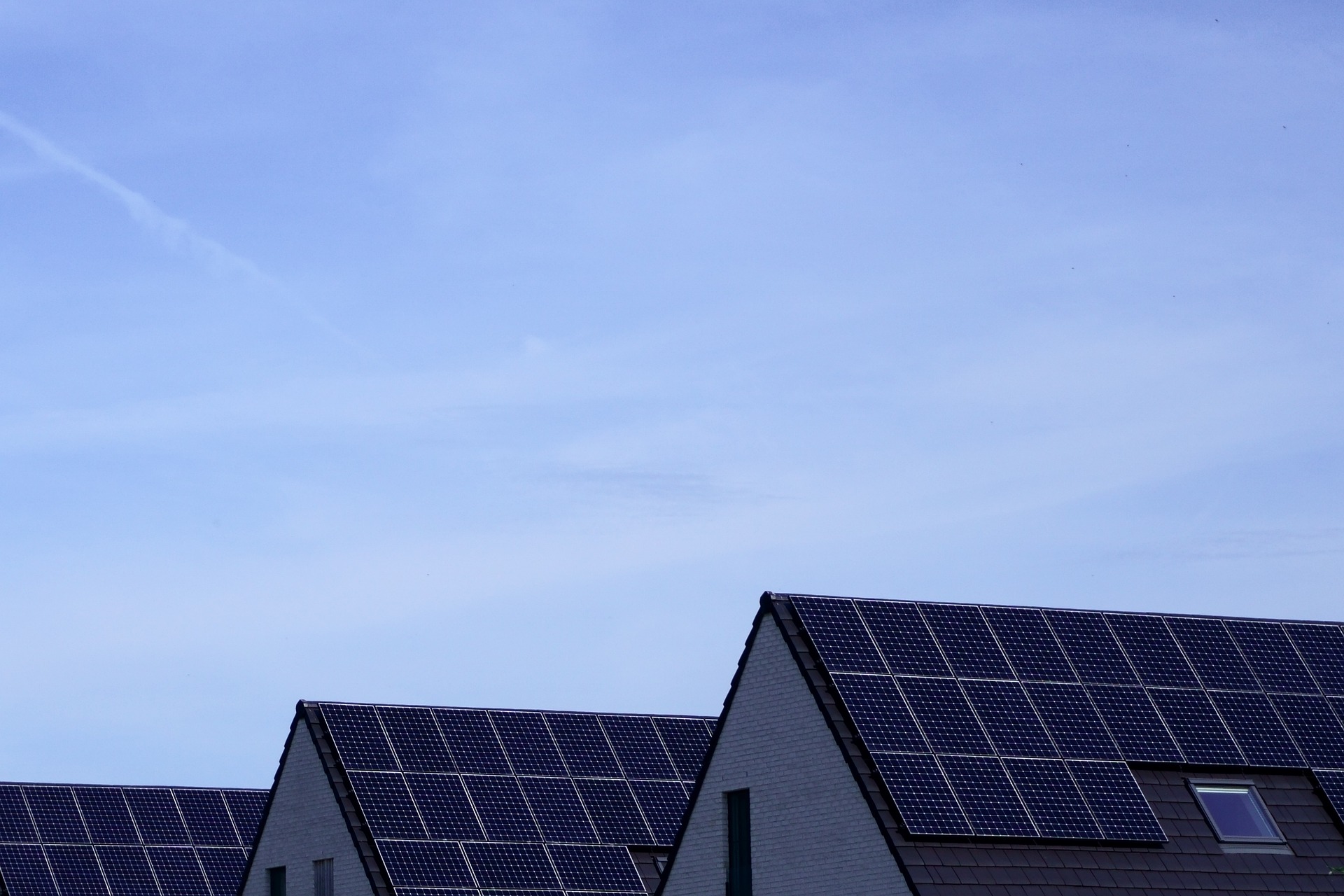Sustainable Living Solutions for a Greener Future
Eco homes are changing the way we live. Discover how sustainable materials, energy-efficient designs, and smart technologies are making homes greener, more comfortable, and cost-effective. Learn how these innovations are shaping everyday living while reducing environmental impact.

Eco houses are revolutionizing residential architecture by prioritizing sustainability without sacrificing comfort or style. These environmentally conscious homes integrate advanced technologies, sustainable materials, and efficient design principles to minimize environmental impact while providing comfortable, healthy living spaces. As climate concerns grow and energy costs rise, eco houses offer practical solutions for homeowners seeking to reduce their ecological footprint while enjoying modern comforts and potential long-term savings.
Benefits of Eco Homes for Sustainable Living
Eco homes deliver multiple advantages that extend beyond environmental protection. These dwellings are designed to use resources efficiently, particularly water and energy, resulting in significant utility savings over time. Many eco homes incorporate rainwater harvesting systems, low-flow fixtures, and greywater recycling to minimize water consumption. Additionally, sustainable building materials like reclaimed wood, bamboo, and recycled content products reduce the carbon footprint associated with construction.
The health benefits of eco homes are equally compelling. These residences typically feature superior indoor air quality thanks to non-toxic building materials, effective ventilation systems, and natural lighting. Many eco-friendly homes avoid volatile organic compounds (VOCs) found in conventional paints, adhesives, and finishes, which can cause respiratory issues and other health problems. The emphasis on natural light not only reduces electricity needs but also supports occupants’ mental well-being and circadian rhythms.
Beyond personal benefits, eco homes contribute to broader sustainability goals by reducing pressure on natural resources and decreasing pollution. By choosing sustainable housing, homeowners become part of the solution to environmental challenges while creating resilient living spaces designed to withstand changing climate conditions.
How Eco Homes Reduce Energy Consumption and Costs
Energy efficiency stands as one of the most significant advantages of eco homes. These properties incorporate multiple strategies to minimize energy use, starting with the building envelope. Superior insulation in walls, roofs, and foundations prevents heat transfer, while high-performance windows and strategic orientation maximize natural heating and cooling. These passive design elements work together to maintain comfortable temperatures with minimal mechanical assistance.
Renewable energy systems form another crucial component of eco homes’ efficiency strategy. Solar panels, small-scale wind turbines, and geothermal heat pumps allow homeowners to generate clean energy onsite, reducing or eliminating dependence on grid electricity. Energy-efficient appliances, LED lighting, and smart home technology further decrease consumption by optimizing when and how energy is used throughout the home.
The financial implications of these energy-saving features are substantial. While eco homes may require higher upfront investment, they deliver considerable long-term savings through reduced utility bills. Homeowners typically recoup these additional costs through energy savings within 5-10 years, after which the reduced operating expenses represent ongoing financial benefits. Additionally, many regions offer tax incentives, rebates, and favorable financing for energy-efficient homes, further improving the economic equation.
Eco Home Technologies That Improve Comfort and Efficiency
Modern eco homes leverage a variety of innovative technologies to enhance both sustainability and livability. Smart home systems represent one of the most transformative additions, allowing precise control of heating, cooling, lighting, and appliances to optimize energy use while maintaining comfort. These systems can learn occupants’ preferences and adjust settings automatically, ensuring resources are used only when needed.
Advanced HVAC solutions like heat recovery ventilators (HRVs) and energy recovery ventilators (ERVs) maintain excellent indoor air quality while conserving energy by transferring heat between incoming and outgoing air streams. Meanwhile, high-efficiency heat pumps provide both heating and cooling using significantly less energy than conventional systems. For water heating—typically a major energy consumer—solar thermal systems and heat pump water heaters offer substantial efficiency improvements.
Building materials technology has also advanced considerably, with new insulation options like aerogel, vacuum insulated panels, and phase-change materials providing exceptional thermal performance in compact forms. Similarly, electrochromic glass can adjust its tint automatically to control solar heat gain while maintaining views and natural light. These technologies work together to create homes that are not just efficient but exceptionally comfortable and responsive to occupants’ needs.
How Eco Homes Contribute to a Greener Lifestyle
Eco homes serve as enablers for more sustainable daily living practices. Their design often incorporates features that make environmentally friendly behaviors more convenient, such as built-in recycling and composting systems, edible landscaping, and dedicated spaces for growing food. Many eco homes include electric vehicle charging stations, secure bicycle storage, and connections to public transportation, facilitating lower-carbon transportation choices.
The materials and construction methods used in eco homes reflect lifecycle thinking about environmental impact. Many builders prioritize locally sourced materials to reduce transportation emissions and support regional economies. Durability is another key consideration, with eco homes designed to last longer and require less maintenance than conventional construction, reducing the need for resource-intensive renovations and rebuilds.
Perhaps most importantly, eco homes raise awareness about sustainable living by demonstrating that environmentally responsible choices need not involve sacrifice. Residents of eco homes often report increased mindfulness about resource use that extends to other aspects of their lifestyle. As these homes become more visible in communities, they inspire conversations and consideration of sustainable practices among neighbors, friends, and visitors, amplifying their positive environmental impact.
Eco Home Features and Their Real-World Implementation
Various eco home features have moved from experimental to mainstream as their benefits have been demonstrated in real-world applications. Understanding the practical implementation of these features helps potential eco homeowners make informed decisions.
| Feature | Implementation Example | Typical Cost Range | Benefit |
|---|---|---|---|
| Solar PV System | 5-10kW rooftop installation | $15,000-$25,000 | 50-100% reduction in electricity bills |
| High-Performance Insulation | Spray foam or cellulose in walls/attic | $5,000-$10,000 | 20-30% reduction in heating/cooling costs |
| Heat Pump HVAC | Air-source or ground-source system | $6,000-$25,000 | 30-70% reduction in heating/cooling energy |
| Rainwater Harvesting | 1,000-5,000 gallon collection system | $4,000-$12,000 | 30-50% reduction in water consumption |
| Triple-Glazed Windows | Whole-house installation | $8,000-$15,000 | 10-20% reduction in energy loss |
Prices, rates, or cost estimates mentioned in this article are based on the latest available information but may change over time. Independent research is advised before making financial decisions.
The implementation of these eco features varies widely based on climate, local regulations, and individual priorities. For instance, homes in sunny regions might prioritize solar power and passive cooling, while those in colder climates might focus on superior insulation and efficient heating. Many homeowners adopt a phased approach, starting with the most cost-effective improvements and gradually adding features as budgets allow. This strategy makes eco homes accessible to a broader range of people rather than limiting them to those who can afford complete green builds.
Eco houses represent a significant step toward more sustainable living environments. By integrating energy efficiency, renewable resources, and thoughtful design, these homes reduce environmental impact while providing comfortable, healthy spaces for their occupants. The technologies and approaches that define eco homes continue to evolve, becoming more accessible and effective with each iteration. As climate challenges intensify and resource constraints grow, the principles embodied in eco houses offer a promising path toward residential sustainability that balances human needs with environmental responsibility. For those considering new construction or renovation, incorporating eco-friendly features presents an opportunity to create living spaces that align with both personal values and planetary needs.




